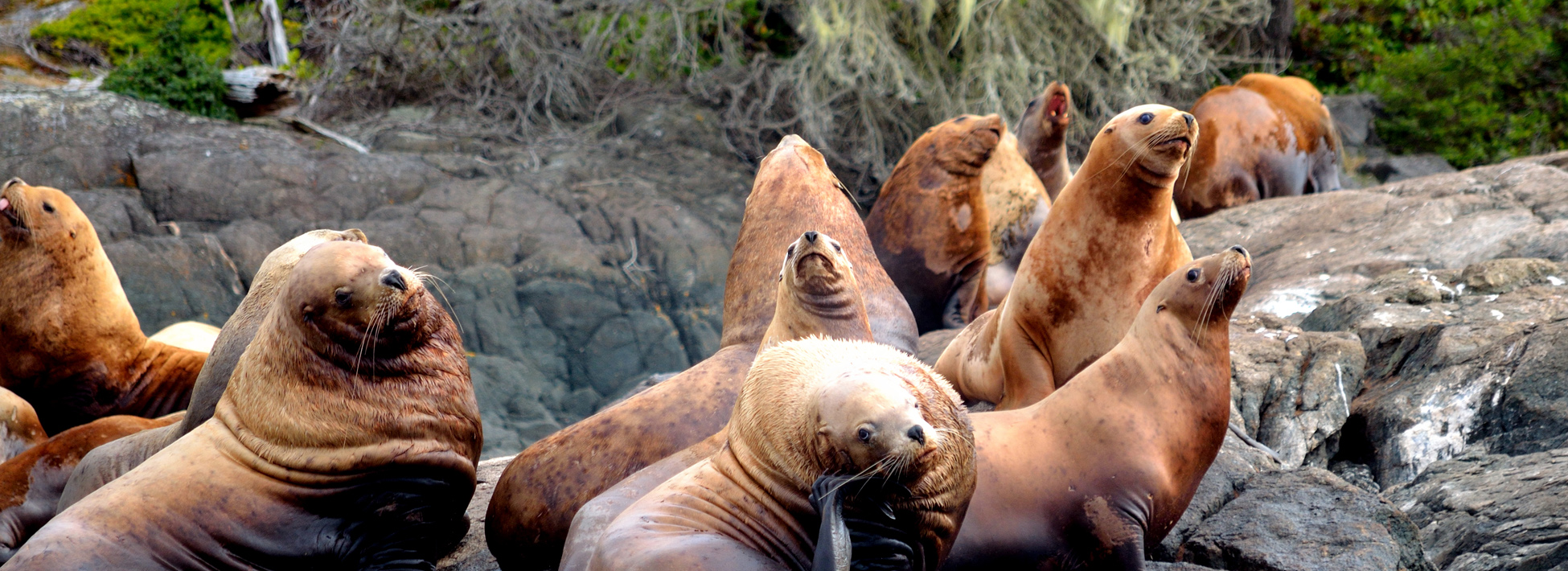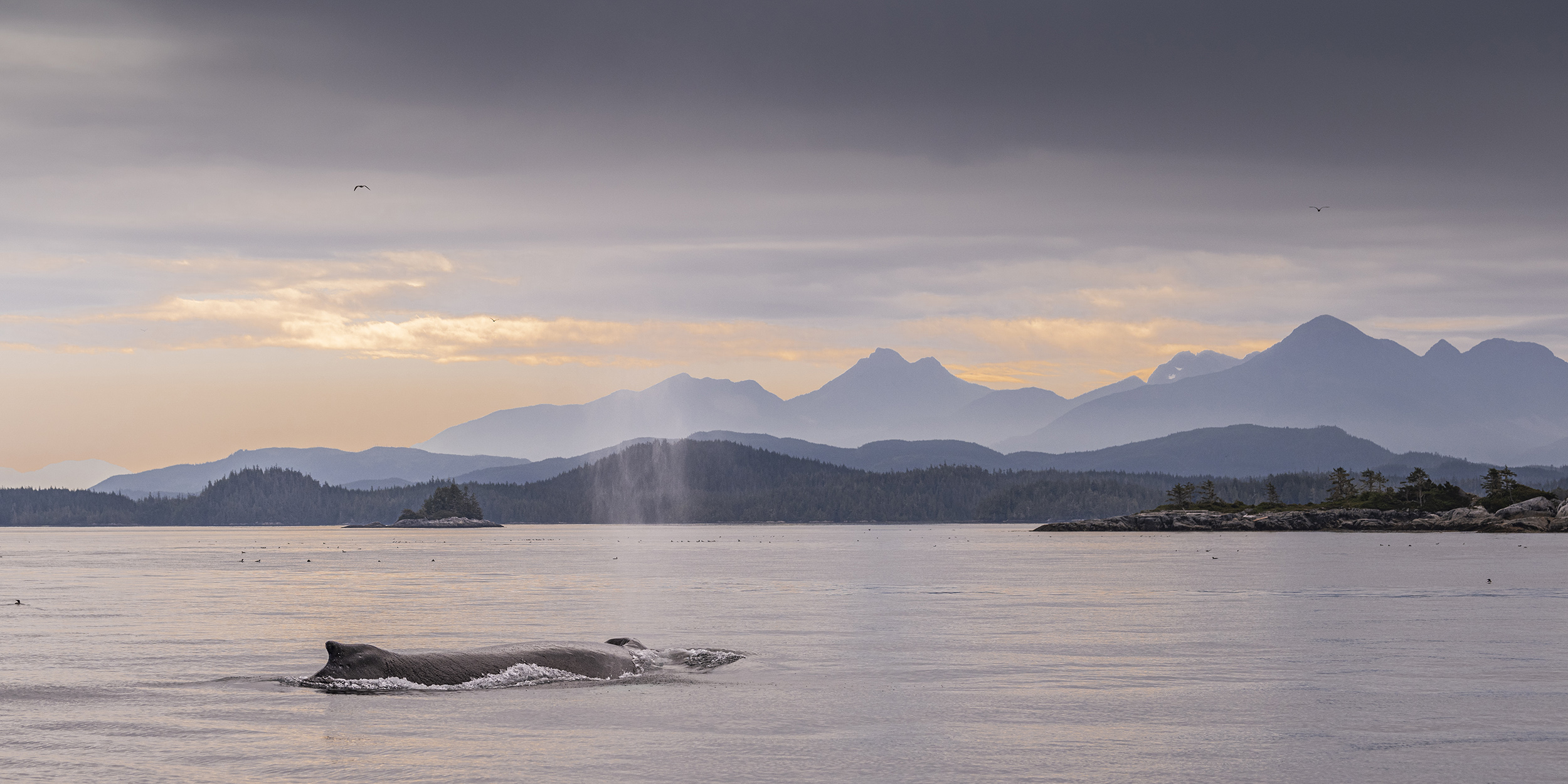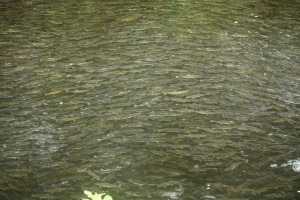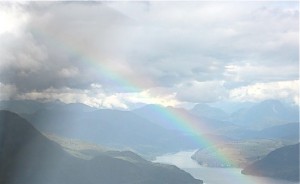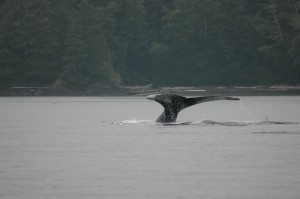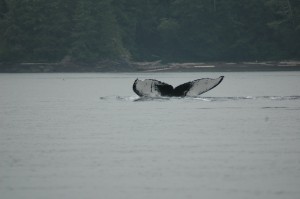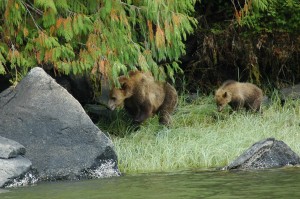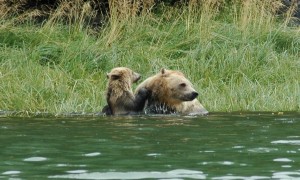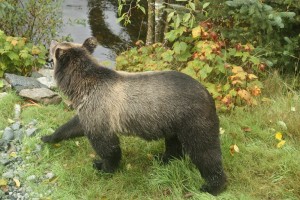
From August 25th to early October the grizzly bear tour from Grizzly Bear Lodge goes to the Glendale River on Knight Inlet on uses one of two viewing platforms located near a man made salmon spawning channel. The two stands are less than seventy-five meters (yards) apart and each provide excellent opportunities for close up bear viewing. The above photo provided by UK’s Lynn Morris shows a grizzly bear walking beneath the viewing stand. It does show how close the bears come to the stand but not the “grandeur” of the bear….. view of other stand tomorrow
